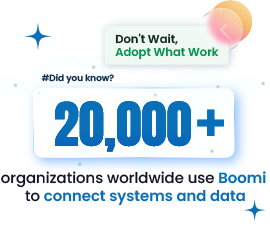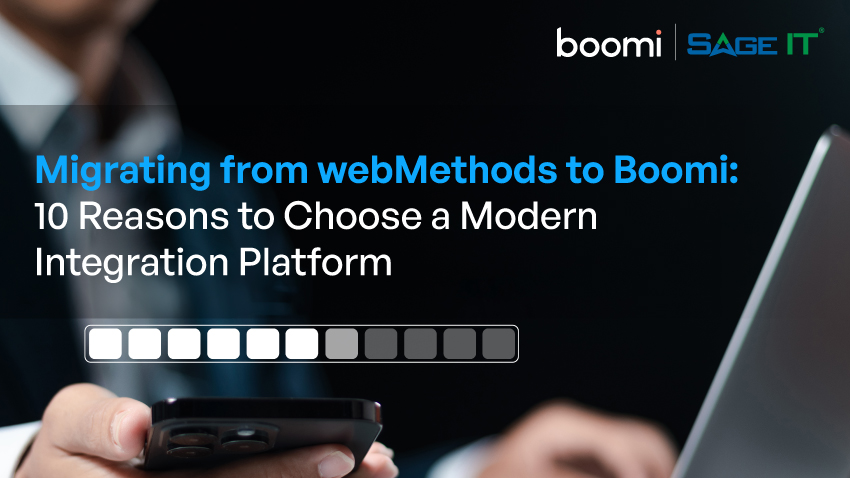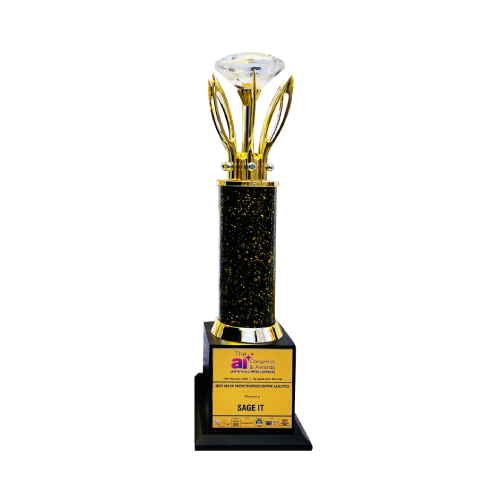“When data from IoT devices doesn’t flow smoothly into existing business systems, the gaps are felt almost immediately. You may have sensors on production lines, but unless the information reaches your management systems, downtime issues go unnoticed. Inconsistent data flows cause delays, missed opportunities, and operational inefficiencies, forcing teams to work harder to bridge the gaps.
IoT devices work better when connected to central business applications, allowing data to flow freely between departments, platforms, and people. Boomi’s platform allows you to remove barriers, so every sensor, machine, and device communicates directly with your core systems. This makes life easier for decision-makers, operations teams, and even IT departments, who no longer have to manage constant workarounds or manual data transfers. Everything connects smoothly, and businesses can operate with more clarity and confidence in their decisions.
What is IoT and Why Integration is Crucial
The Internet of Things (IoT) connects a range of devices—sensors, machines, and everyday objects—that collect data from their surroundings. These devices communicate with each other, creating a flow of information. In business, this means decisions are driven by accurate data from sources like manufacturing equipment, healthcare devices, or logistics systems. IoT opens doors to smarter operations, but without proper integration, the benefits of this technology remain limited.
The problem many companies face is that their IoT data remains trapped in isolated systems. This limits visibility and hampers decision-making because disconnected data points don’t provide the whole picture. Manual processes slow everything down and lead to inefficiency.
Integrating IoT with business systems solves this by creating one unified view of all data, ensuring smooth workflows and accurate decisions. Boomi breaks down silos, connects devices with business applications, and makes sure every part of your operation works together. This results in clear insights, automation, and more streamlined processes.
Difficulties in IoT Adoption and How Boomi Overcomes Them
Data Management Challenge
It’s common to feel overwhelmed by the sheer volume of data generated by IoT devices. From manufacturing sensors to smart meters, your data flows non-stop. But as this data comes in, it arrives in all shapes and sizes—different formats, varying structures, and often without immediate context. Organizing this into something actionable takes time, and without a solid system, it turns into a mess of unstructured noise.
This chaos leads to delays in decision-making. You’re left spending more time cleaning and preparing data than actually using it to drive improvements. Boomi provides a solution here.
It processes and normalizes data in real-time, centralizing everything so that what used to be hours or days of manual effort becomes streamlined.
You spend less time cleaning data and more time using it where it matters—whether it’s improving system efficiency or responding quickly to operational insights.
Scalability Challenge
Your IoT setup starts small—maybe a few dozen devices across a factory floor or several hundred sensors spread across a supply chain. As your network grows, so does the complexity. Suddenly, you’re dealing with thousands of devices, all demanding real-time connectivity and synchronization.
Managing these devices manually or with legacy systems is inefficient and prone to errors. And as the devices pile up, your infrastructure begins to strain under the pressure.
Without the ability to scale smoothly, these bottlenecks hit hard. Adding more devices requires reconfiguring your infrastructure, increasing downtime, and causing system slowdowns. With Boomi’s cloud-native infrastructure, scalability becomes automatic.
You don’t need to worry about infrastructure strain. Boomi handles the integration, scaling your system seamlessly, without the need for constant manual intervention.
Your network grows at its own pace, and the integration layer remains solid, ensuring smooth data flow and operational consistency as the number of devices skyrockets.
Security and Privacy Challenge
Every new device in your IoT environment creates another potential vulnerability. The more connected devices you have, the harder it becomes to secure them all.
Your team must constantly monitor and update security protocols across an ever-expanding network, which adds to the workload and increases the risk of data breaches.
Then there’s the matter of compliance—managing IoT data across different regulations can feel like trying to keep up with a moving target.
This constant security scramble often leads to gaps in protection. Managing device security, monitoring data flows, and ensuring that sensitive information remains private becomes a juggling act.
Boomi simplifies this process by providing built-in security measures that address your concerns right out of the box. It doesn’t matter how many devices are in play—Boomi ensures that data flows through encrypted channels, securing every step of the process.
You also gain control over who can access what data, reducing the risk of breaches without needing to micromanage each device. Compliance becomes less of a headache because Boomi takes care of the hard part—making sure your data aligns with regulations across all jurisdictions.
Features of Boomi That Empower IoT
Application Integration
Boomi’s low-code platform connects IoT data with business systems like ERP and CRM, making integration fast and code-free. Data flows smoothly between devices and applications, responding in real time to changing conditions. By removing complexity, teams can focus on results without worrying about extensive manual coding, keeping everything connected effortlessly.
API Management
Boomi’s API management ensures seamless data flow between IoT devices and business applications, offering control over data transmission. APIs are securely managed, allowing for instant data sharing across systems. This setup simplifies the challenge of handling multiple devices, giving you a single point of access to manage real-time data exchange without delays or bottlenecks.
Edge Integration
Boomi processes data closer to devices with edge integration, reducing response times by avoiding the need to send data to the cloud. This enables real-time decision-making, crucial when immediate actions are needed. By processing data at the source, it minimizes lag and ensures data-driven decisions happen instantly, right where they’re needed most.
Unified Data Access
Boomi brings together data from various IoT devices into a single, unified view. This ensures that all information is available in one place, making analysis and monitoring easier. Disconnected data sources come together seamlessly, helping you get clear insights without sifting through scattered information, ensuring smoother operations.
Real-World Use Cases of IoT and Boomi Integration
Manufacturing Use Case
In manufacturing, downtime costs businesses an estimated $50 billion annually, with equipment failures accounting for 42% of that total. Many rely on manual data collection and disconnected systems like SAP ERP, which struggle to synchronize with IoT sensor data. Delays in decision-making often occur, and equipment failures remain unanticipated.
By connecting IoT sensors directly to SAP ERP, real-time data flow on machine health becomes seamless. This supports proactive maintenance scheduling and keeps production lines stable. Boomi’s platform allows for an effortless connection between IoT sensor data and ERP systems, minimizing downtime and production delays.
Boomi offers clear connections between your IoT systems and SAP ERP, providing insights to manage downtime effectively.
Healthcare Use Case
In healthcare, patient data from wearables like Fitbit and Apple Watch rarely integrates with Epic or Cerner—leading hospital management systems. Only 23% of hospitals have integrated wearable devices into patient care, limiting access to real-time data and leaving providers without key insights to adjust treatments promptly.
Boomi bridges this gap by integrating patient data from wearables into Epic Systems, making health data available instantly to hospital teams. This enhances care quality by allowing providers to track vitals like heart rate and glucose levels, ensuring proactive treatment and reducing emergency visits.
With Boomi, integrating real-time health data from wearable devices into Epic Systems becomes simple and effective.
Supply Chain Use Case
Supply chains relying on manual tracking systems or outdated ERP platforms like Microsoft Dynamics often experience delays in inventory updates. 43% of small businesses still track inventory manually, resulting in costly mistakes such as stockouts or overstocking. Customer satisfaction drops when these inefficiencies persist.
Boomi integrates IoT tracking devices with SCM, ensuring visibility into inventory levels across various locations. Real-time inventory data helps logistics teams make informed decisions, reducing delays and improving shipment accuracy. Boomi’s platform offers continuous visibility, helping meet demand more accurately.
Boomi links real-time tracking systems directly to SCM, providing continuous updates to ensure smooth supply chain operations.
What’s the Future of this Integration?
Edge Computing for Faster Processing
The future of IoT lies in processing data where it’s generated—closer to the source. Boomi supports this by bringing computational power directly to the edge of networks. This cuts down on delays, as decisions can be made in real-time without sending data back and forth to centralized systems. By managing data closer to devices, your operations get quicker insights, helping you make informed decisions when every second matters.
AI and Machine Learning
Boomi integrates with AI and machine learning tools to craft real-time predictive models based on the vast streams of IoT data. This means your systems can spot trends, identify issues before they arise, and deliver insights to help refine operations without manual intervention. By connecting IoT with AI, Boomi equips you to anticipate what’s next, creating proactive systems that adapt to changing data patterns and deliver improved outcomes over time.
Blockchain for IoT Security
As IoT networks expand, security challenges grow. With Boomi’s integration capabilities, blockchain technology becomes part of your security stack, safeguarding data transmission and device interactions. Blockchain makes your IoT systems more reliable by offering transparent, tamper-proof records of every transaction. This ensures every device interaction remains secure, helping you protect sensitive information across a large, connected network.
Conclusion
No more struggling with data silos, disjointed systems, or security gaps. Boomi puts everything under one roof, giving you direct access to real-time insights that drive smarter decisions. For tech and business leaders, this means less complexity and more action. Whether managing vast networks of devices or ensuring data security, Boomi makes it possible to move with confidence and precision, turning IoT from a challenge into a competitive advantage.
Ready to take control? Contact Sage IT’s Boomi Integration solutions team today to align your operations, remove unnecessary roadblocks, and achieve measurable results across your organization.


















